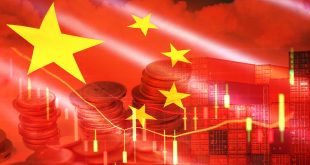China’s economic growth has been slowing, prompting policymakers to consider a significant stimulus package. While a proposed 10 trillion yuan ($1.4 trillion) fiscal stimulus could provide a temporary boost, concerns persist about its long-term efficacy and its ability to address the underlying structural issues.
The Limits of Stimulus
The Chinese government’s stimulus efforts have primarily focused on financial market engineering rather than directly addressing the needs of households. This approach, while potentially stabilizing markets in the short term, does little to stimulate consumer spending and economic growth.
Key shortcomings of the current stimulus package include:
Insufficient Direct Support for Households: The government’s reluctance to provide direct cash transfers to households limits its ability to boost consumer spending and confidence.
Overreliance on Infrastructure Investment: While infrastructure investment can create jobs and boost economic activity, it is not a sustainable long-term solution. Overinvestment can lead to excess capacity and inefficient allocation of resources.
Financial Risk Management: The government’s focus on financial stability has led to a reliance on state-led interventions to support asset prices. This approach may create moral hazard and exacerbate systemic risks.
The Political Economy of Stimulus
Xi Jinping’s leadership style and priorities have constrained the scope of the stimulus package. His aversion to direct cash transfers to households reflects a preference for state-led investment and a desire to maintain control over the economy. The focus on industrial policy and technological self-sufficiency has limited the government’s willingness to prioritize consumer spending.
A Fading Middle Class and Eroding Confidence
China’s middle class, once a key driver of economic growth, is facing increasing economic insecurity. Declining income growth, rising living costs, and uncertainty about the future have eroded consumer confidence. This has led to a decline in household spending and a rise in savings rates.
Geopolitical Implications
China’s economic challenges have broader geopolitical implications. A struggling Chinese economy could impact global trade, supply chains, and geopolitical stability. The US and other countries should carefully monitor China’s economic trajectory and adjust their policies accordingly.
The Path Forward
To address its economic challenges, China needs to adopt a more comprehensive approach that combines fiscal stimulus, monetary policy, and structural reforms. Key reforms that could help revitalize the Chinese economy include:
Income Redistribution: Implementing policies to reduce income inequality and increase disposable income for low-income households.
Social Safety Net: Strengthening the social safety net to provide a safety cushion for vulnerable populations.
Innovation and Technology: Investing in research and development to promote technological innovation and enhance productivity.
Green Growth: Transitioning to a low-carbon economy and investing in renewable energy and environmental protection. However, the political will to implement such reforms remains uncertain, as Xi Jinping’s priorities may continue to prioritize state-led development over consumer-driven growth.
China’s stimulus package is a complex and multifaceted endeavor. While it may provide some short-term relief, it is unlikely to address the fundamental issues that are holding back the Chinese economy. The government’s ability to navigate these challenges and implement effective policies will be critical for China’s future prosperity.
 Noor Trends News, Technical Analysis, Educational Tools and Recommendations
Noor Trends News, Technical Analysis, Educational Tools and Recommendations





